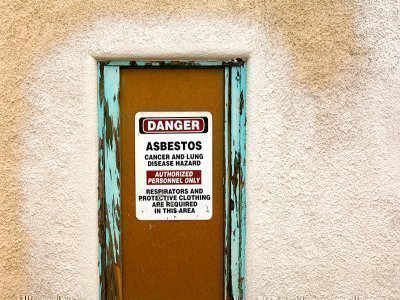Asbestos Back In The News?
The importation of asbestos is again finding its way into the news. In March, Border Force tested four shipments of imported products and all four were found to contain asbestos, whilst in September asbestos was found in building materials imported from China.1 This appears to be a continuing issue and one that puts Australian workers at risk from uncontrolled exposure to working with asbestos containing materials.
Asbestos is banned in more than 55 countries around the world, including Australia which banned its use and importation in December 2003. However, there are still countries that mine and use asbestos around the world. Russia is the top producer with Kazakhstan, China and Brazil also amongst the top producers. The only way to ensure materials are asbestos free is to test them in line with the Australian Standard.
Putting aside current imported materials containing asbestos, WorkSafe Victoria inform us that asbestos was used in more than 3000 common Australian building materials last century with approximately 1 in 3 Australian homes still containing asbestos, lurking in walls, hot water services, roof sheeting and meter boxes.

Sept, 2021: A boiler lagged with friable asbestos insulation located in a walkway of a JTA client. It is exposed to the elements causing significant disturbance of the insulation and potentially exposing passers-by to airborne asbestos fibre. The building owner had no knowledge of the inherent danger.
WorkSafe Victoria emphasise that:
- Asbestos exposure may cause mesothelioma, lung cancer and asbestosis
- Australia has one of the highest rates of mesothelioma in the world with almost 700-800 Australians diagnosed every year and predictions we’ll reach 18,000 cases by 2021
- Tradies are among the most at risk from asbestos exposure
- Tradies and DIY workers should check for asbestos before starting work
- There is a need for asbestos registers, instruction training, supervision and safe removal of asbestos
Given that the regulatory requirement for identification of asbestos materials (i.e. the Asbestos Register) is a prerequisite to any control, it would be logical that this should be front and centre of compliance obligations for all workplaces or potential workplaces. Unfortunately though, WorkSafe doesn’t have the number of inspectors needed to visit each workplace to ensure an Asbestos Register is in place.
This is not a criticism of the WorkSafe inspectorate. The mathematics of inspectorate versus workplace numbers dictate visit likelihood. It goes more to the heritage listed system that relies on inspectors’ visits to pick up non-compliance, perhaps due to ancient, embedded legal technicalities.
Contrast this with the checks that are required to build a small shed in your back yard (which I have recently done) where a far more rigorous compliance system operates ensuring approved controls on safety and quality, signed off by competent persons, are in place for important issues such as:
- Windows overlooking a neighbours’ back lawn
- Abrasive strips on step treads
- Termite prevention and floor clearance in designated flood zones (where no termite or puddle has been sighted in living memory)
All these approvals operate pretty much seamlessly without the Municipal Building Surveyor moving from their office. There could be a similar approach employed to ensure Asbestos Registers are prepared by competent people and are present in all workplaces for people to view.
Perhaps the softer regulatory approach taken on controlling asbestos materials is to avoid the political implications of imposing the financial burden of compiling an Asbestos Register on small employers or potential employers? If so, the comparison with the above construction requirements in your backyard ($500 for an initial termite identification inspection and up to $1500 for the treatment and many thousands for the additional floor clearance for a shed and the associated building surveyor fees and charges) defuse this argument.
Ignoring the legal and moral imperatives for asbestos related disease prevention, if audit costs are a deterrent, it may well be a false economy. When businesses do renovations or demolition, as they inevitably do in older buildings where asbestos materials are likely to dwell, the cost of the audit will have to be borne. The cost and disruption to the business of delays and variations and potential legal implications of unplanned asbestos finds normally dwarf the cost of an asbestos audit by a competent person. How this pans out over the economy might be worth serious economic study.
Is your Asbestos Audit up to date? As one of Australia’s leading asbestos experts for over 35 years, JTA can help you with Asbestos Audits









